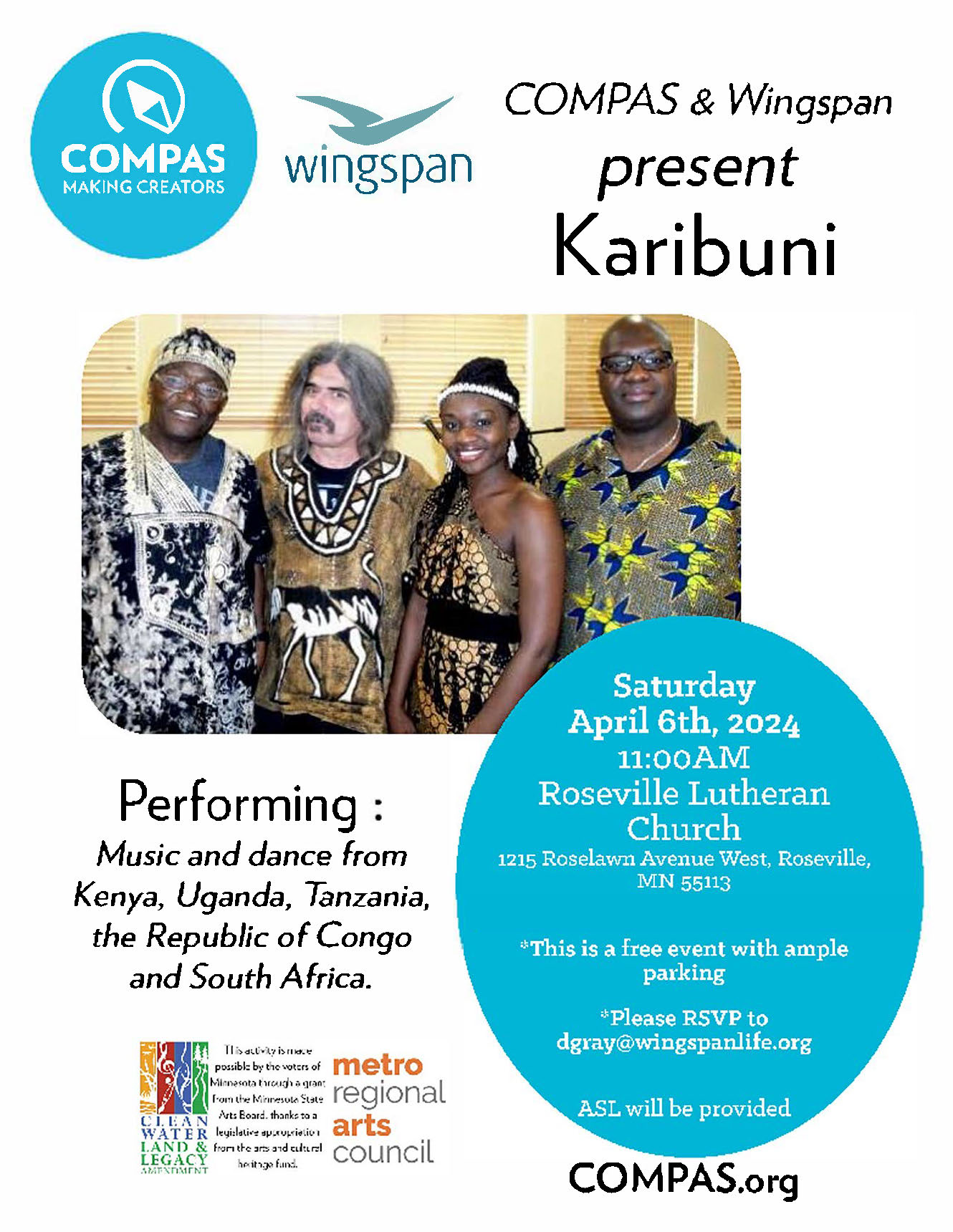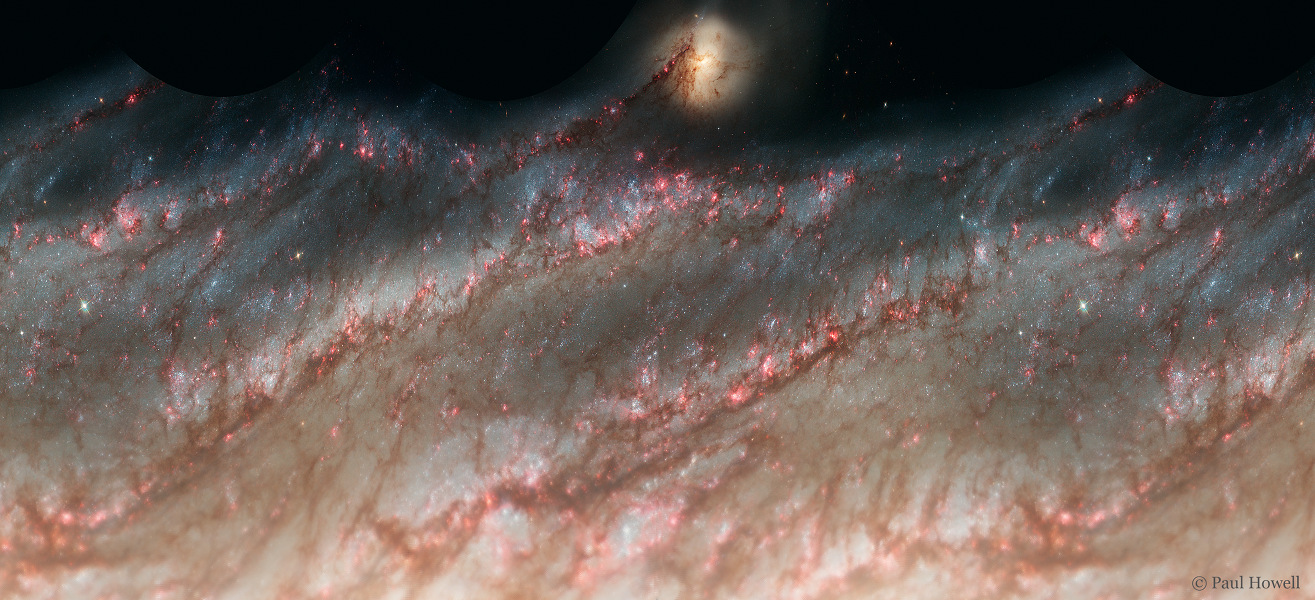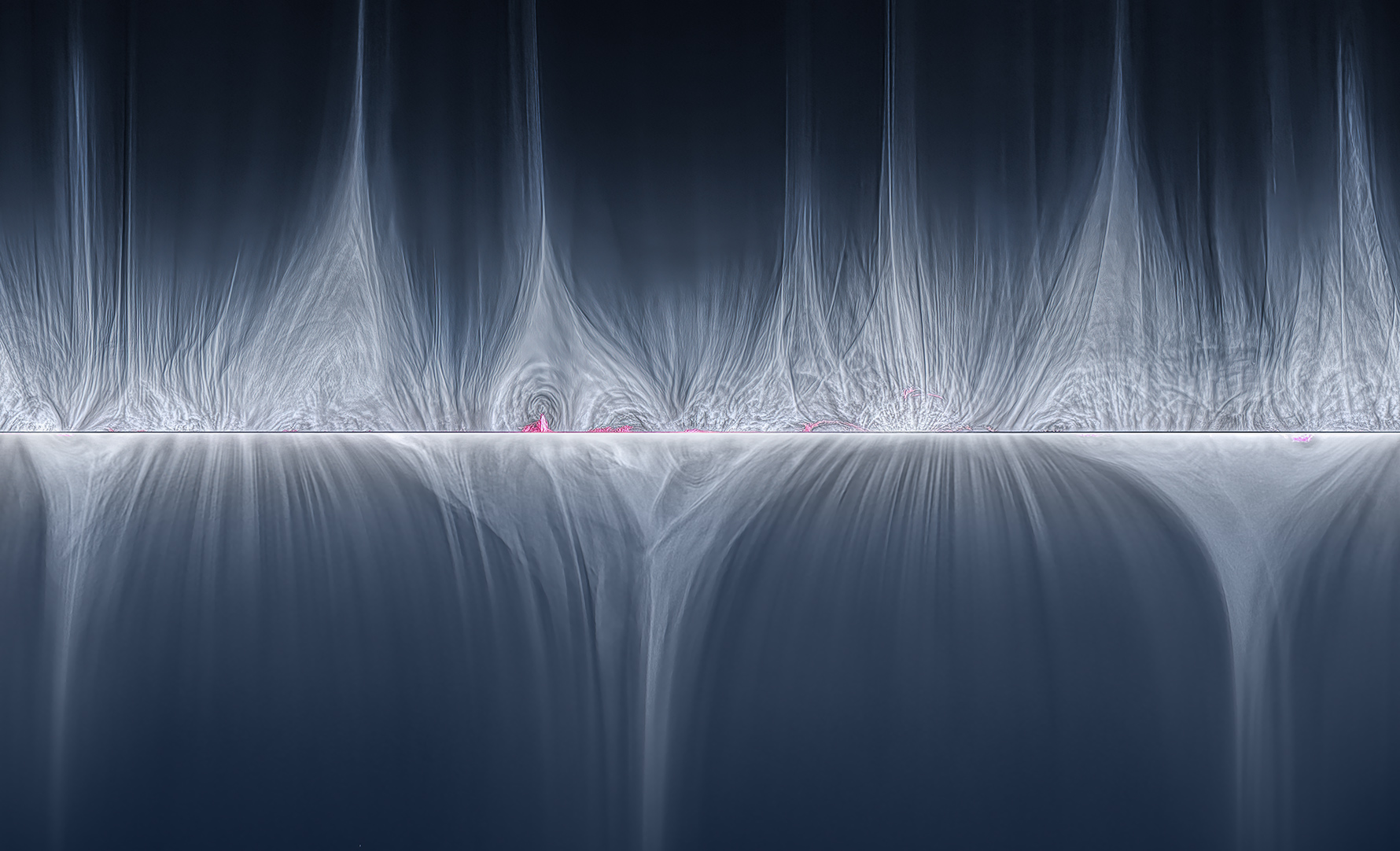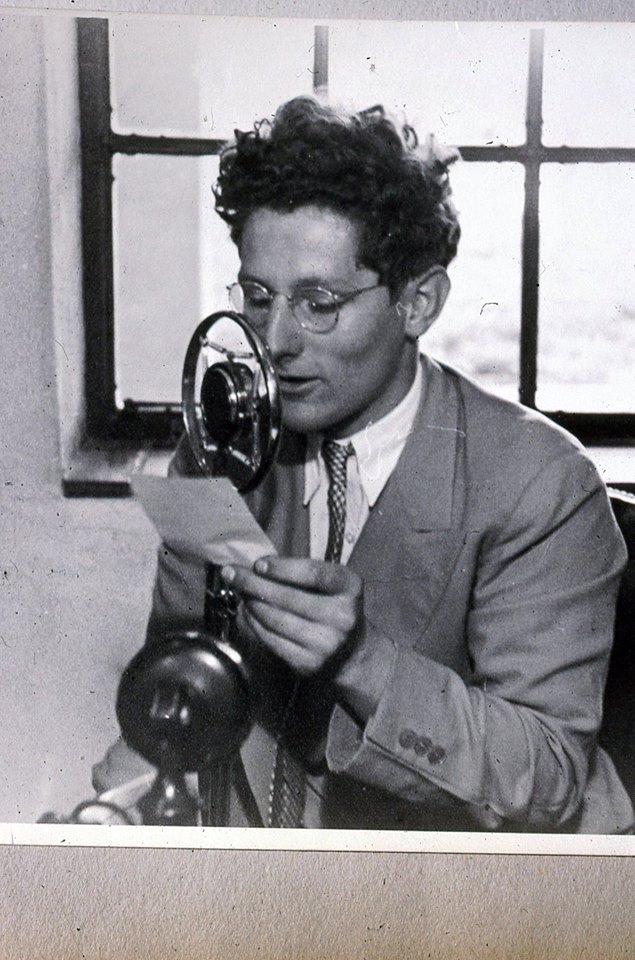Blog
Karibuni performing Wingspan Life Resources (https://wingspanlife.org/) Saturday April 6th 2024 11am with Joe Shalita, MP, Edna Stevens and mick laBriola. This is the group of years ago with Siama Matuzungidi, Serge Akou, Lidia Wokolo Sanguma and mick Bamboula

The arms of a grand design spiral galaxy 60,000 light-years across are unwound in this digital transformation of the magnificent 2005 Hubble Space Telescope portrait of M51. In fact, M51 is one of the original spiral nebulae, its winding arms described by a mathematical curve known as a logarithmic spiral, a spiral whose separation grows in a geometric way with increasing distance from the center. Applying logarithms to shift the pixel coordinates in the Hubble image relative to the center of M51 maps the galaxy’s spiral arms into diagonal straight lines. The transformed image dramatically shows the arms themselves are traced by star formation, lined with pinkish starforming regions and young blue star clusters. Companion galaxy NGC 5195 (top) seems to alter the track of the arm in front of it though, and itself remains relatively unaffected by this unwinding of M51. Also known as the spira mirabilis, logarthimic spirals can be found in nature on all scales. For example, logarithmic spirals can also describe hurricanes, the tracks of subatomic particles in a bubble chamber and, of course, cauliflower.

Beverly “Guitar” Watkins (April 6, 1939 – October 1, 2019) was an American blues guitarist. Sandra Pointer-Jones wrote, “Beverly Watkins is a pyrotechnic guitar maven whose searing, ballistic attacks on the guitar have become allegorical tales within the blues community.” George Varga, reviewing her debut CD, observed that Watkins “sings and plays with enough poise and verve to make musicians half her age or younger consider alternative means of employment.”
Watkins was born in Atlanta, Georgia, in 1939. When she was about 12 years old, her family moved to Commerce, Georgia. She began playing music in school, and, in high school, she played bass for a band called Billy West Stone and the Down Beats.[4] Around the year 1959, she was introduced to Piano Red, who had a daily radio show on WAOK, and she subsequently joined Piano Red and the Meter-tones, who played in a number of towns in the Atlanta area, and then Atlanta clubs such as the Magnolia Ballroom and the Casino, before starting to tour throughout the southeast, primarily at colleges. About the time the group renamed itself Piano Red and the Houserockers, they started touring nationally.
more...John Paul Pizzarelli Jr. (born April 6, 1960) is an American jazz guitarist and vocalist. He has recorded over twenty solo albums and has appeared on more than forty albums by other recording artists, including Paul McCartney, James Taylor, Rosemary Clooney; his father, jazz guitarist Bucky Pizzarelli; and his wife, singer Jessica Molaskey.
The son of swing guitarist Bucky Pizzarelli, John Pizzarelli was born in Paterson, New Jersey. He started on guitar when he was six and played trumpet through his college years. He attended Don Bosco Preparatory High School, an all-boys Catholic school. In his teens, he performed with Benny Goodman, Les Paul, Zoot Sims, Slam Stewart, and Clark Terry.
Pizzarelli attended the University of Tampa and William Paterson University, though he has said that his most important teacher was his father from 1980 to 1990. During the 1980s, he established himself as a jazz guitarist and a vocalist. He released his debut solo album, I’m Hip (Please Don’t Tell My Father), in 1983.
more...Randolph Edward “Randy” Weston (April 6, 1926 – September 1, 2018) was an American jazz pianist and composer whose creativity was inspired by his ancestral African connection.
Weston’s piano style owed much to Duke Ellington and Thelonious Monk, whom he cited in a 2018 video as among pianists he counted as influences, as well as Count Basie, Nat King Cole and Earl Hines.Beginning in the 1950s, Weston worked often with trombonist and arranger Melba Liston.
Described as “America’s African Musical Ambassador”, Weston once said: “What I do I do because it’s about teaching and informing everyone about our most natural cultural phenomenon. It’s really about Africa and her music.”
Randolph Edward Weston was born on April 6, 1926, to Vivian (née Moore) and Frank Weston and was raised in Brooklyn, New York, where his father owned a restaurant. His mother was from Virginia and his father was of Jamaican–Panamanian descent, a staunch Garveyite, who passed self-reliant values to his son. Weston studied classical piano as a child and took dance lessons. He graduated from Boys High School in Bedford-Stuyvesant, where he had been sent by his father because of the school’s reputation for high standards. Weston took piano lessons from someone known as Professor Atwell who, unlike his former piano teacher Mrs Lucy Chapman, allowed him to play songs outside the classical music repertoire.
more...Charlie Rouse (April 6, 1924 – November 30, 1988) was an American hard bop tenor saxophonist and flautist. His career is marked by his collaboration with Thelonious Monk, which lasted for more than ten years.
Rouse was born in Washington, D.C., United States. At first he worked with the clarinet, before turning to the tenor saxophone.
Rouse began his career with the Billy Eckstine Orchestra in 1944, followed by the Dizzy Gillespie Big Band in 1945, the Duke Ellington Orchestra from 1949 to 1950, the Count Basie Octet in 1950, Bull Moose Jackson And His Buffalo Bearcats in 1953, and the Oscar Pettiford Sextet in 1955. He made his recording debut with Tadd Dameron in 1947, and in 1957 made a notable album with Paul Quinichette.
He was a member of Thelonious Monk‘s quartet from 1959 to 1970. In the 1980s he was a founding member of the group Sphere, which began as a tribute to Monk.
Charlie Rouse died from lung cancer on November 30, 1988, at University Hospital in Seattle at the age of 64.
more...Arthur S. Taylor Jr. (April 6, 1929 – February 6, 1995 NY,NY) was an American jazz drummer, who “helped define the sound of modern jazz drumming”.
As a teenager, Taylor joined a local Harlem band that featured Sonny Rollins, Jackie McLean and Kenny Drew. After playing in the bands of Howard McGhee (1948), Coleman Hawkins (1950–51), Buddy DeFranco (1952), Bud Powell (1953), George Wallington and Art Farmer (1954), Powell and Wallington again (1954–55), Gigi Gryce and Donald Byrd (1956), he formed his own group, Taylor’s Wailers.Between 1957 and 1963, he toured with Donald Byrd, recorded with Miles Davis, Gene Ammons and John Coltrane, and performed with Thelonious Monk; Taylor also was a member of the original Kenny DorhamQuartet of 1957.
more...Performing Saturday April 6th 2024 11am for Wingspan Life Resources (https://wingspanlife.org/). Located at Roseville Lutheran Church. Music of Uganda, Tanzania and Kenya with Yusuf Shalita, MP Gubare Mpanbara, Edna Stevens and mick laBriola.

Friday April 5th 2024 6pm. Erev Shabbat Service Featuring Jonathan Ornstein, CEO of JCC Krakow Music with Inbal Sharett-Singer, Jayson Rodovsky, Jeff Bailey, Pete Whitman and mick laBriola.
more...Changes in the alluring solar corona are detailed in this creative composite image mapping the dynamic outer atmosphere of the Sun during two separate total solar eclipses. Unwrapped from the complete circle of the eclipsed Sun’s edge to a rectangle and mirrored, the entire solar corona is shown during the 2017 eclipse (bottom) seen from Jackson Hole, Wyoming, and the 2023 eclipse from Exmouth, Western Australia. While the 2017 eclipse was near a minimum in the Sun’s 11 year activity cycle, the 2023 eclipse was closer to solar maximum. The 2023 solar corona hints at the dramatically different character of the active Sun, with many streamers and pinkish prominences arising along the solar limb. Of course, the solar corona is only easily visible to the eye while standing in the shadow of the Moon.

The above image depicts the solar corona’s change from
near solar minimum in 2017 (lower half) to near maximum in 2023 (upper half)
The image data has been remapped from its orginal circular format
to a “panoramic” retangular format, then mirrored to form a single image.
The upcoming April 8th 2024 Total Solar Eclipse path will cross Mexico and the USA
and should display and even more active corona as ther Sun nears solar maximim.
Stanley William Turrentine (April 5, 1934 – September 12, 2000 Pittsburg. PA) was an American jazz tenor saxophonist and record producer. He began his career playing R&B for Earl Bostic and later soul jazzrecording for the Blue Note label from 1960, touching on jazz fusion during a stint on CTI in the 1970s.He was described by critic Steve Huey as “renowned for his distinctively thick, rippling tone [and] earthy grounding in the blues.” In the 1960s Turrentine was married to organist Shirley Scott, with whom he frequently recorded, and he was the younger brother of trumpeter Tommy Turrentine, with whom he also recorded.
more...The Passing of Bassist Nabil Totah… Nabil Marshall Totah, 5 April 1930-August 15th 2012, Ramallah, Jordan. As a child, ‘Nobby’ Totah played violin and piano. Relocating to the USA in 1944, he studied political science before deciding on a career in music.
Taking up the bass in 1953, just as he engaged in military service, he played in army bands and then with Hampton Hawes and Toshiko Akiyoshi. These engagements occurred while he was in Japan and on his return to the USA the following year, he played briefly with Charlie ‘Bird’ Parker and then began long intermittent spells in small groups led by with Gene Krupa and by Johnny Smith.
Also during the 50s, Totah played with a wide range of artists including Eddie Costa, Tal Farlow, Bobby Jaspar, Herbie Mann, Zoot Sims, George Wallington and Phil Woods. During the next decade, he worked in bands led by Benny Goodman, Bobby Hackett, Max Kaminsky, Lee Konitz and Hazel Scott. Concurrent with these activities, Totah also led his own small groups using as sidemen a distinguished array of musicians, including Pepper Adams and Horace Parlan. A solid and reliable accompanist, Totah has always subordinated his role to the needs of the musicians he supports and has accordingly built a very high reputation within the jazz fraternity.
more...Billy Bland (April 5, 1932 – March 22, 2017) was an American R&B singer and songwriter.
Bland, the youngest of 19 children, first sang professionally in 1947 in New York City, and sang with a group called The Bees in the 1950s on New Orleans‘s Imperial Records. In 1954, “Toy Bell” by the group caused some unrest by veering into the dirty blues genre. Dave Bartholomew brought them to New Orleans, where they recorded a song he had written and recorded twice before: firstly in 1952 for King Records as “My Ding-a-Ling,” and later that year for Imperial as “Little Girl Sing Ting-A-Ling.” Bland later pursued a solo career.
In 1960, Bland heard Titus Turner recording the song “Let the Little Girl Dance” in the studio, and demonstrated for Turner how to sing it (along with guitarist Mickey Baker and other session musicians). The event was recorded by record producer Henry Glover, and was eventually released as a single. The tune was a hit in the US, peaking at number 11 on the US Billboard R&B chart. and number 7 on the Billboard Hot 100. Bland had two other minor hits that year, “Harmony” (U.S. Hot 100 number 91) and “You Were Born to Be Loved” (U.S. Hot 100 number 94). He recorded until 1963 for Old Town, and then quit the music industry.
more...- Entrada: when the dancer comes on stage
- Llamada: from the verb “llamar,” to call. The dancer calls to the other people on stage that something is about to happen, for example a new verse or section of footwork
- Desplante: a “display,” a short section of footwork
- Letras: dance that traditionally accompanies passages of singing. Chord progressions suggesting the letra may be included even when a singer is not present.
- Escobilla: long passages of footwork (though not too long – in buleria in particular this is frowned upon)
- Cierre: a closing dance pattern, often one moving across the stage

More Posts
- Rhythm Roots Workshop Tasks Unlimited
- Cosmo NGC 1893
- Emmylou Harris
- Marvin Gaye
- Leon Russell
- Larry Coryell
- Booker Little
- World Music Cumar Dhuule
- Daily Roots Dennis Brown
- Alien Spaceships Circling Earth
- Challenge to Change
- Cosmo NGC 4945
- Jorge López Ruiz
- Alberta Hunter
- Gilbert Scott-Heron
- Duke Jordan
- World Music Faysal Cumar Mushteeg Ahun
- Daily Roots Tommy McCook Supersonics
- Ahmed Yusuf & Somali Blues Performance 4-6-2025
- Don’t Lose Your Head
